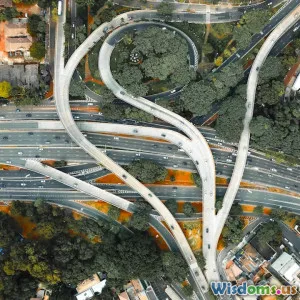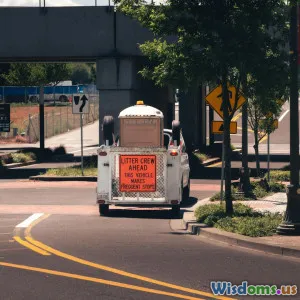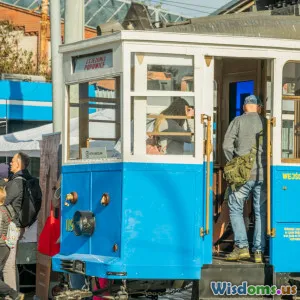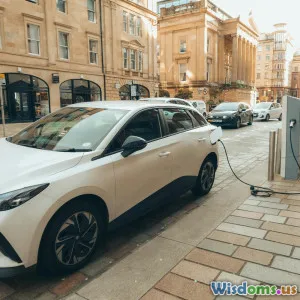
Innovations in Urban Mobility
8 min read Explore groundbreaking innovations revolutionizing urban mobility, reshaping cities, and transforming transportation technology. (0 Reviews)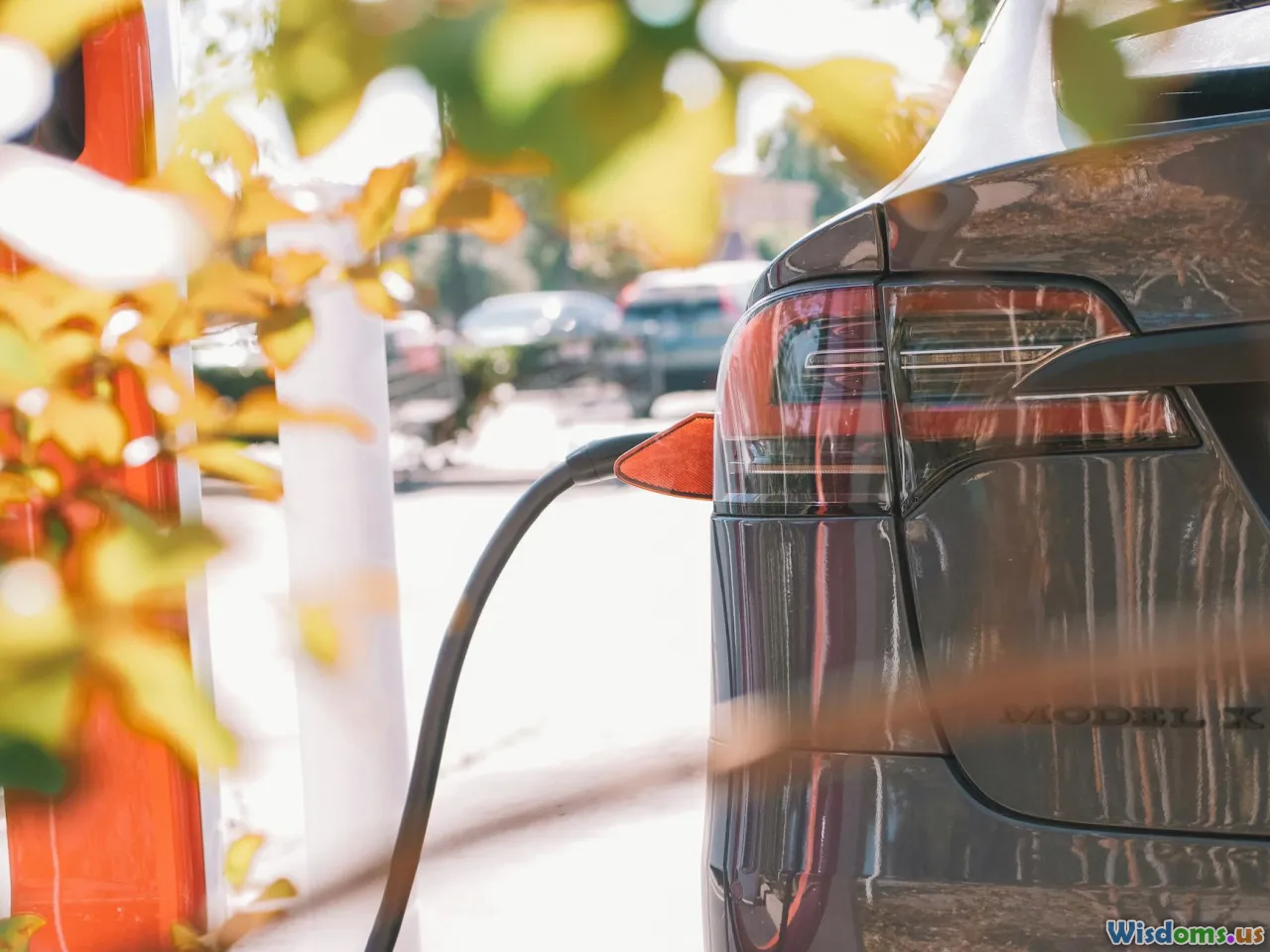
Innovations in Urban Mobility: Driving the Future of Transportation
Urban mobility—the way people move through cities—is undergoing a profound transformation. As urban populations swell, mobility innovations have become essential to solve pressing challenges like congestion, pollution, and inefficient transport modes. From electric vehicles to smart infrastructure and shared mobility platforms, innovations in urban mobility are not just improving how we travel; they are reshaping entire cityscapes and lifestyles.
The Growing Need for Urban Mobility Innovation
Despite technological advances, many cities worldwide are battling escalating traffic congestion and emissions. According to a 2019 INRIX Global Traffic Scorecard, the average driver in Los Angeles wastes nearly 102 hours annually stuck in traffic. Pollution from conventional vehicles contributes to over 4 million premature deaths globally every year, according to the World Health Organization.
Population density and urban sprawl intensify these transport challenges, pushing cities to seek smarter, cleaner, and more efficient mobility solutions. Traditional car-centric models no longer satisfy the needs of growing, sustainability-conscious urban populations.
Electric Vehicles (EVs): Steering Away from Fossil Fuels
One of the most revolutionary changes reshaping urban transport is the shift to electric vehicles. EVs significantly reduce tailpipe emissions, quieten city streets, and lower operational costs. Cities like Oslo and Amsterdam have become global exemplars by aggressively promoting EV adoption through subsidies, extensive charging infrastructure, and low-emission zones.
Tesla’s innovations have popularized EVs by proving that electric cars can be high-performance and desirable. Additionally, newer models from companies like Nissan (Leaf), Hyundai (Ioniq), and Volkswagen (ID series) are making EVs more affordable and accessible.
Public transit electrification is another leap forward, with cities deploying electric buses and taxis to lower emissions further and revitalize urban air quality.
Smart Infrastructure: The Backbone of Intelligent Mobility
Urban mobility innovations extend beyond vehicles to include intelligent infrastructure embedded with sensors, communication systems, and data analytics. Smart traffic lights dynamically adjust cycles based on real-time congestion data, optimizing traffic flow and reducing idle time.
Singapore’s Intelligent Transport System monitors and manages road activities, employing automated incident detection and adaptive signal control. This results in significant time savings and decreased congestion.
Furthermore, connected infrastructure enables Vehicle-to-Everything (V2X) communication principles, where cars communicate with traffic lights, other vehicles, and even pedestrians. This technology underpins safer and more efficient traffic management.
Shared Mobility & Micro-mobility: Redefining Access over Ownership
Shared mobility models—car-sharing, ride-hailing, and bike or scooter rentals—have exploded in popularity, changing how urban dwellers view transportation ownership. According to a study by the National Renewable Energy Laboratory, shared autonomous vehicles could reduce fleet size by 10-20%, decreasing urban congestion.
Companies like Uber, Lyft, Bird, and Lime enable access to transportation on-demand, reducing the necessity for private car ownership and encouraging multimodal travel. Additionally, micro-mobility devices such as electric scooters and bikes address the “last mile” problem, seamlessly connecting commuters to mass transit.
Cities like Copenhagen and Paris have integrated extensive bike-sharing programs to encourage sustainable transport with reported benefits including increased physical activity and cleaner air.
Autonomous Vehicles: The Road Ahead
Self-driving cars promise to dramatically enhance urban mobility by increasing safety, improving traffic efficiency, and providing mobility for underserved populations. Waymo, Tesla, and other auto innovators are leading trials and limited deployments of autonomous vehicles (AVs) in various cities.
While widespread adoption faces regulatory and ethical hurdles, experts assert that AVs could reduce accidents by up to 90%, per National Highway Traffic Safety Administration data. Additionally, AVs offer seamless integration into shared mobility schemes, potentially reducing vehicle ownership and parking demand in dense areas.
Integrating Mobility-as-a-Service (MaaS)
Mobility-as-a-Service platforms unify multiple transport modes into a single digital interface, enabling users to plan, book, and pay for journeys seamlessly—whether it includes buses, trains, bikes, or ride-hailing.
Helsinki’s Whim app exemplifies MaaS, empowering users to choose the fastest or cheapest routes without owning a vehicle. This integration promotes efficient, sustainable mobility and reduces dependency on cars.
According to a 2022 McKinsey report, MaaS can reduce private car trips by up to 30% in urban areas, boosting overall transit utilization and lowering emissions.
Challenges and the Road to Future Cities
Despite technological advances, urban mobility innovation faces challenges such as infrastructure costs, data privacy concerns, and the digital divide. Equitable access must remain a priority, ensuring new systems serve all demographic groups.
Data security in connected vehicles and smart infrastructure is critical to prevent malicious attacks. Moreover, retrofitting existing cities requires significant investment and policy support.
Urban planners, policymakers, and technology companies must collaborate to create comprehensive frameworks balancing innovation with inclusivity and resilience.
Conclusion: A Mobility Revolution with Lasting Impact
The scope of innovation in urban mobility—from electric vehicles and smart infrastructure to shared transport and autonomous vehicles—is transforming how cities function and how people experience movement.
These innovations promise cities that are cleaner, safer, and more accessible, contributing to improved public health and economic productivity. As intelligent mobility ecosystems develop, embracing these changes will be vital for governments and citizens alike.
Driving or riding into this future means understanding the intersection of technology, policy, and human behavior. By fostering sustainable, user-centric urban mobility, cities can reinvent themselves as thriving, future-ready places where everyone moves better.
The journey to smarter urban mobility isn’t just about getting from point A to B; it’s about reimagining the city itself.
Rate the Post
User Reviews
Popular Posts











